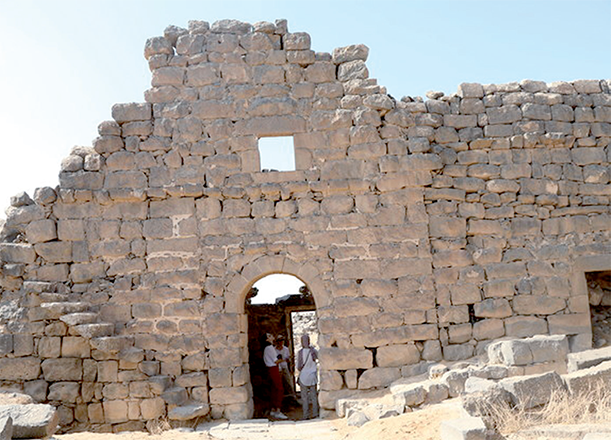AMMAN — Decades of research on Safaitic, Latin and Greek graffiti uncover surprising evidence of cultural contact and daily life in the ancient deserts of southern Syria and northern Arabia.
Nowadays, the Safaitic, Latin and Greek inscriptions in Hawran testify the complex relations between the nomadic and sedentary population between the 1st century BC and the 4th century AD. After decades of research of Safaitic inscriptions by specialists, the research seems to provide more evidence for contact than what was previously thought.
“The Safaitic inscriptions are graffiti in an Ancient North Arabian dialect, related to, but distinct from, Arabic, and carved in one of a family of alphabets which was unique to ancient Arabia. From their distribution and content, it is clear that they were carved almost entirely by the nomads of the deserts of southern Syria, north-eastern Jordan and northern Saudi Arabia who, for the only time in their history, had learnt to read and write,” noted a veteran British researcher Michael Macdonald, adding that nomads used the skill mainly to pass the time while doing boring jobs such as guarding their flocks and herds while they pastured.
This gave these writers ample time to carve their thoughts, hopes, fears, prayers, and — when taken together — these tens of thousands of graffiti present us with vivid glimpses of the daily life of these nomads, Macdonald elaborated, adding it is unfortunate that there is no equivalent source for the settled rural or urban populations of the Roman provinces of Syria and Arabia at this time.
Gravestones, signatures, official inscriptions, and so on, can provide a great deal of information but they do not give us the thoughts of inhabitants of urban centres equivalent to this intensely personal information from the desert.
According to Macdonald, the personal nature of these inscriptions also brings problems as the Safaitic graffiti represent self-expression not communication and were carved for the pleasure of the authors with no thought for the needs of a reader.” They can be written in any direction, and employ no vowels of any sort, or diphthongs, and no division between words. More serious for our purposes is the fact that an individual author obviously knew what he wanted to say and since he did not expect anyone to read his text, felt no need to clarify, add details, or explain allusions.”
However, due to the lack of written sources (which is often a problem of historiography), modern researchers have no much choice but use these inscriptions as the source for everyday life of nomads in the antique period.
Some nomads knew Greek language and they wrote bilingual inscriptions.
“We have brief Greek/Safaitic bilinguals, and graffiti in Greek by members of tribes otherwise known only in Safaitic; occasional Nabataean/Safaitic and Palmyrene/Safaitic bilinguals, as well as Safaitic inscriptions by people calling themselves ‘so-and-so the Nabataean’,” Macdonald explained.
Roman soldiers who served in the region also left graffiti in Latin and Greek, especially near the Roman fortifications.
There are also a number of inscriptions which mention their authors’ dealings with the Ḥawran, which suggest that they sometimes pastured their animals there.
“For instance, one says that he drove his camels back to the desert on account of snow in the Ḥawran, and several say that they began their migration eastwards to the inner desert from there,” Macdonald underlined, adding that this migration begins with the first rains in October.
This graffiti also reflect on a complex relations between nomads, semi-nomadic and sedentary populations.
